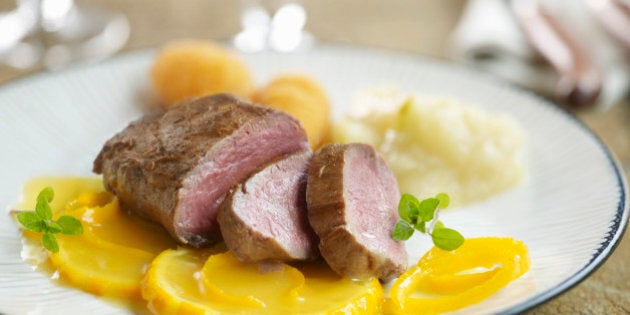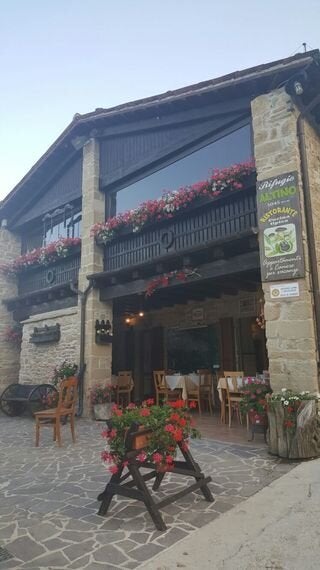
We all know many reasons not to eat meat: because of cruelty to animals, particularly within the industrial farming production system, or human health reasons due to chemicals, growth stimulants, herbicides, etc. used in industrial meat farming. Or because the flavour of mass-produced meat is often mediocre. Some people may not eat meat because of concern for environment and climate change. The FAO reports that total emissions from global livestock represent 14.5 per cent of all anthropogenic GHG emissions.
Imagine if meat were outside of these categories of concern?
Is there a more ethical meat consumption that even abstainers could really enjoy occasionally?
The wild boar has been reintroduced into the Monti Sibillini National Park Central Italy where it enjoys an ideal mountain life, eating wild truffles, feasting on chestnuts and acorns (the oak is the emblematic, indigenous tree) and making the most of all the vegetation in this highly natural and pure environment, which is recognized as a biodiversity hot spot, rated: "richness and narrow endemism."
The conditions suit wild boar so well that there comes a point when wild boar is too prolific and as part of the park's conservation work, a studied and then controlled cull is agreed.
Wild boar can carry many diseases like Trichina, which are transmissible to humans.
Further, wild meat can't be processed in the same way as industrial meat. In the past, due to health regulations, it was impossible to sell wild boar that was culled.
After years of work, the park has been able to fulfill EU regulations, and have wild meat specially processed at two pre-existing slaughterhouses on the edge of the park.
Here's how it works:
Hunters who want to participate in the project have to first undertake a month-long training program offered by the park, teaching them everything about the species and its interrelation with the biodiversity of the park. Upon successful completion the hunter is awarded a special license.
The Park Authority together with the Corpo Forestale dello Stato then select 200 designated sites, which are marked with GPS.
The thirty hunters taking part this year must register their presence at the site they go to and register if they obtain an animal.
Apparently, the animal experiences little "stress" because it is shot in its natural environment, without a chase, by a highly trained hunter who then puts the animal in his jeep and drives to the slaughterhouse.
Within an hour to an hour and a half, the meat is being processed.
Unlike industrial meat, wild meat must be hung. Depending on the age and weight of the boar, some are hung for up to two weeks in the refrigerated room at the slaughterhouse.
During this time, medical tests are made to check the meat is fit for human consumption (without diseases).
The hunter then pays the slaughterhouse and receives the paperwork require to sell the meat to the public; to butcher shops or restaurants.
One of the people participating and leading in this project, Amedeo Tuccini, runs a beautiful "rifugio" located in the mountains at Altino, 1045 metres altitude. This is a popular spot for hikers and nature lovers. Now it has become renowned for the wild boar dish they serve, which was featured this year at Milan Expo 2016.
"We are listed in the top 17 of the 800 most recommended restaurants on Trip Advisor for this area. The wild boar dish we make has become famous. People come from Rome just to try it," Amedeo explains.
Apart from the amazing taste of the meat, the fame of this dish is also due to another ingredient. The wild boar is served with the "Mele Rosa," or the "Pink Apple," which is a heritage food listed in the Slow Food Ark of foods to be protected. In the 1980s a few cultivators in the mountains realized they possessed the last of these apple trees and formed an action group. Now this has become a heritage food promoted by the region. Being a historic/wild apple it is particularly crisp and tangy.
"The Mele Rosa is growing right here at Altino, wild, anyway. I go to the specified hunting sites near Altino, so these foods are really local. This apple with the boar is a very traditional dish. When people come to mountains, most people want traditional food. But high quality. That's why this dish has been such a success," Amedeo says.
Is this a guilt-free meat meal that for once we could eat and enjoy?

(Rifugio of Altino, Monti Sibillini National Park 2016)
Follow HuffPost Canada Blogs on Facebook
MORE ON HUFFPOST:
